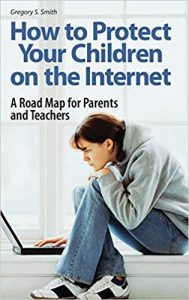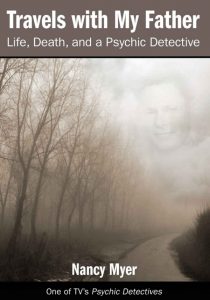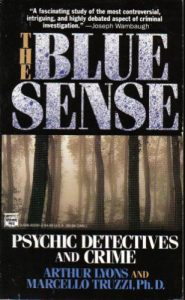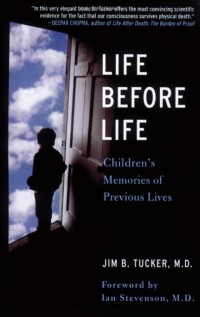How to Protect Your Children on the Internet: A Road Map for Parents and Teachers
HOW TO PROTECT YOUR CHILDREN AND STUDENTS FROM THE INTERNET
How to Protect Your Children on the Internet: A Road Map for Parents and Teachers, by Gregory S. Smith; published by Westport: Praeger Publishers, 2007; review by Valdemar W. Setzer
- 1. Introduction
-
This paper is a review of the book by Gregory S. Smith How to Protect Your Children on the Internet: A Road Map for Parents and Teachers (Westport: Praeger Publishers, 2007). Upon request of a Brazilian press, I gave an opinion on the convenience of translating and editing it; my opinion was strongly favorable. The resulting Brazilian edition is titled Como Proteger seus Filhos da Internet: Um guia para pais e professores (Ribeirão Preto: Novo Conceito, 2009). As the subject was a pressing educational issue, I decided to write this review before the publication of the Brazilian edition, citing all the points I considered most important in the book, adding at the end my opinions and recommendations regarding this issue. My intention in publishing the original review on my Web site was to make available to the Portuguese speaking public some important information of the book, and encourage its study after its translation. Because of this, I covered the book in many details. This English version has been requested by Jacques Brodeur, who intended to publish it in his Web site Edupax.
Sections 2 to 3 of this review contain an extensive summary of the contents of the book. This summary is presented according to its structure, in a quite objective way, that is, without expressing my opinion. Obviously, the choice of topics presented in this review is subjective, as well as the choice of quotations from the book. The latter represent points of view and data considered relevant. Titles of chapters and sections of the book and the excerpts quoted from it were cited in quotation marks. Section 4 contains some general opinions about the book and additional arguments showing that the Internet should not be used by children and adolescents.
The book is organized into two parts, each with several chapters. Each chapter concludes with a section with recommendations to parents.
- 2. Part One: “Introduction to Technology and Risks on the Internet”
-
2.1 Chapter 1: “Welcome to the Internet.”
In this chapter the author describes what is the Internet and its history.
It is worth repeating some of the book’s data to form an idea of the size of the Internet: in 1995, the number of its users was 45 million; in 2000 420 million, in 2005 it surpassed 1 billion and a forecast for 2011 suggested more than 2 billion. According to the Wall Street Journal, as of may 2006 143 million Americans had Internet access from their homes, with 72% connected via broadband. For what concerns us the following data are relevant: 91% of all U.S. children between 3 and 12 years, in kindergartens and elementary schools use computers, and 59% have Internet access.
In the section of recommendations at the end of this chapter the author introduces one of the most important facets of the danger posed by the Internet: “Children between ages 8 and 17 are not growing in an environment similar to the childhood of their parents. Children of past generations couldn’t even fathom the kinds of hard-core pornography available today at the click of a mouse, nor predict the actions of today’s teens while they are online.” (p. 13.) This is followed by recommendations to parents to become quite familiar with the computer and Internet used at home, especially the use of passwords, accounts and restrictions that can be introduced; record all programs used at home with their versions, including email, Web browsers, instant messaging systems, anti-virus and anti-spam programs (spam is unwanted email distributed to a very large list of addresses, containing irrelevant material, advertisements, viruses etc.), and programs for filtering and monitoring accesses; talk to the children and ask them what they are doing on the network; review the sites they are accessing (he gives directions on how to see the history of accesses from browsers); doing searches on computer files; noting all devices that have Internet access, such as telephones, computers, TVs, etc.; ask the children how many email accounts they have, whether they use instant messaging systems etc. “Be prepared for some lies.” (p. 14.)
2.2 Chapter 2: “Back to School”
In this chapter the author defines usual Internet terminology in alphabetical order, such as what are administrator privileges of an operating system, blocking software, blog, modem, DSL, etc.
In the section of recommendations, he calls attention to the fact that Internet technologies and resources are constantly changing, so that parents and educators must constantly update themselves. A very important point is “By the time most children reach the age of 14 or 15 years of age, they have completely surpassed their parents’ knowledge of computers and the Internet. If left unchecked, these may get into some trouble, whether or not they mean it. Parents have an obligation and right to nurture, educate and protect their children from the risks associated with going online. Those that feel they are violating the children’s privacy by keeping ahead of them from a technological and monitoring perspective may actually be contributing to their risk.” (p. 43.) This emphasis on the obligation of parents for the proper upbringing of their children is present in the whole book.
Some highlights of the recommendations: when the children are young and in intermediate classes (5th to 8th grades), “place your Internet-enabled computers in a common space that is viewable. Don’t allow them to have unfettered access to the Internet, especially from their rooms. ” (p. 43.); learn how a firewall works and install one in each machine; make a survey of filters and programs to block access to certain sites — “No computer or device that is used by a child should be without some type of protection or monitoring. As a parent, you are responsible for what your child has access to or is doing online.” (p. 43); install individual accounts for the children on each computer — “When appropriate, restrict those accounts from installing new software or applications. […] No child needs to install software without a parent’s consent, unless of course there is a stealth software installed.” (p. 44.); find out what security measures your child’s school has taken to protect him while using computers in the classroom. “Don’t settle for generic answers. […] Engage your child’s teacher in a conversation on Internet safety. You may be surprised how little they know.” (p. 44.) Most children use an Internet search engine such as Google, Alta Vista, etc. for their school projects, “Where appropriate, help your child perform the search and approve each results page to ensure that they are not being exposed to inappropriate content.” (p. 44.) Maintain a dialogue with the children about the dangers of Internet use.
2.3 Chapter 3: “Risks Overview: Are Parents Making the Grade?”
This chapter describes and details the dangers that children and adolescents risk when using the Internet, and challenges parents to verify if they got the proper information about them.
Right at the beginning, the author puts himself firmly against “privacy advocates that pontificate about how wrong it is for parents to spy on their kids’ activities, some online, in an attempt to keep them safe […]. I have every right as a parent to do what it takes to keep them safe. My house is not a democracy and is far cry from a dictatorship […]. The Internet is definitely an interesting place, especially for parents trying to protect their children from adult content, harmful adult predators, and others intending to physically or emotionally harm children.” (p. 45.)
Attention: at this point I cease to literally quote from the book, unless for chapter and section titles. Due to a request from the author, who menaced of suing me because of plagiarism (in spite of my having put the citations in quotes and specifying the pages they were copied from). He allowed me to quote only 300 words, so from now on I replace his own phrases by my own. I maintain his page numbers, thus making it possible for the reader to locate his own phrases, which are certainly much better written and clear than my limited English permits. If someone would like to receive my original with all his quotations, please write me an e-mail; my address may be found at the top of my home page at http://www.ime.usp.br/~vwsetzer. I excuse myself for the poor result of trying to change his words and phrases. Let it be clear that I did not change this text because of Smith’s menace, but in respect to his wishes.
The author points to the fact that children and adolescents have four major sites of Internet access: the home, school, friends’ homes and Internet cafés or shared Wi-Fi sites (p. 46.). He enumerates the dangers of such use, such as having access to sexual content, being subjected to menaces — eventually from predators with sexual intent; viruses and spyware (software that transmits to others via the Internet personal information like usernames, account numbers, passwords etc.); obtaining personal data; playing games for money and addiction; buying or distributing drugs; viewing acts of violence and mutilation; racism and insensitiveness, fraud and identity theft; injuries inflicted to people. (p. 47.) More specifically, he lists five main dangers for children and youth between 8 and 17 years of age:
- Images of pornography and adult content;
- Viruses, and software that collect data;
- Predators in search of sex;
- Grown-ups desiring to kidnap, sexual abuse or kill children;
- Propagating crimes due to hate, promoting arms and incentive harm to other people (pp. 46-7).
The author presents the various ways in which these dangers can occur, such as chat rooms, cell phones/PDAs, instant messaging, browsing/searching, blogging and email (p. 47). Then he details the dangers of surfing the Internet or using search engines, and shows how content filters are insufficient. He acknowledges that the intent of search companies could be good, but youngsters may circumvent the parameters by altering them, eliminating cookies [local files with data associated with any site, in this case with filtering parameters] or changing to another browser and specifying their own look-up parameters. (p. 48.) The author found that the so-called “family filters” (a class of filters provided by browsers), were not effective in their majority (p. 48) and gives a table of search results. For example, using Google with an activated filter, a search using adult terms provided 146 million pages, and the same search without the filter provided 599 million.
Further dangers in using email, instant messaging and chat rooms are detailed. Then he details what are network predators, and says that the internet predator is in general middle-aged, male, married and has his own children. (p. 52.) In general terms (i.e. not just through the Internet), 25% of sexual abuse are committed by women. According to a citation, sexual predators are smart, have a good knowledge of the Web and how to disguise their files. (p. 52.) The author expresses an opinion based on his personal experiences, that teenagers have more on other people while using the Internet, and they don’t grasp the intentions of a predator, nor the dangers of giving information about themselves for everybody to see. This applies in particular to things they would not tell some friends. The author calls the attention to the fact that parents and teachers should control what children they care about do, in order to avoid their being subjected to risks they don’t understand or decide to ignore. (p. 54.) In the sequel he presents six pages of chat room conversation between a 38-year old predator and a young girl who had inserted photos and personal data on a social networking site (from now on, simply called “social networking”). The predator asked to change the conversation from a public forum to a more private one, where there was no recording of the conversation; he pretended to be a more mature young boy trying to lead the girl to more adventurous situations. They end up making a date, the last sentences of chat being: “(Predator) don’t forget to wear something hot! everyone that sees us will want to be me to be with the hottie, who is also a nice person … (Cutegirl666) really? (Predator) sure. Can’t wait to see you for our first meeting. Remember “don’t tell anyone … can’t wait to see you, chow!” (p. 60).
The author also deals with cases such as blogs and social networking sites, message exchange via cell phones and PDAs (personal digital assistants) – handheld computers that work as cell phones.
This chapter also provides statistics on Internet use by children and adolescents, provided by organizations that deal with exploited and missing children. Some data from a USA national survey made by the University of New Hampshire in 2003 are cited, involving 10-17 year old 796 boys and 705 girls, and also those responsible for them. At least one undesired access to sexual pictures in the previous year were reported by 25% of the youngsters. Moreover, 73% while using a browser and 27% while using email or instant messaging. The places were such incidents happened were 67% at home, 15% in school, 13% at homes of friends, and 3 % in a library. 32% of the pictures showed people in sexual intercourse, and 7% had scenes of violence; of e-mails, 92% came from unknown people. Undesired material was found more by boys (57%) than girls (42%). Furthermore, the exposition 15-year or older youngsters was greater (60%) than younger ones; there was more exposition by troubled youths (p. 64).
It is also worth mentioning a survey conducted by three organizations with 503 parents and youths aged between the ages of 13 and 17 in February 2005, who had Internet access from home: 34% computers with access to the Internet were placed in the living room, 30% in the bedroom. Moreover, 51% of parents don’t know if they have programs installed to monitor what their children do with the computer. Of those who had such programs, 87% used this software to control what their children were doing; 23% did it daily and 33% monthly; teenagers use of instant messaging was reported by 61% of parents; parents who did not control what their children were doing were 42%. In general, parents ignored the acronyms used by their children. For example, 96% of them did not know that P911 meant parent alert, and 92% did not know what A/S/L (age/sex/location) meant (pp. 64-65).
The author shows a questionnaire he prepared and passed to 100 anonymous parents in the U.S. with children between the ages of 8 and 17, showing the percentages of responses. He says that he expanded the ages of those surveyed to children below age 10, because of his experience in seeing users of that age using computers at school and at home. He says that he was surprised with the results, which show that parents are ignorant of the dangers the Internet presents to young children (p. 65).
Here are some of the questions and results, using the number of each question as it is in the book.
Q1: If you have children under 18, do they access the Internet? Yes: 96%, no 4%.
Q3: Does the Internet present any dangers to children? Yes: 98%, no: 2%.
Q6: Specify at what ages that you allowed your children to use the following (pp. 66-8):
- Using a browser: 4 years
- Using e-mail: 4 years
- Phones without instant messaging: 7 years
- Cell phones with messaging: 10 years
- Accounts of instant messaging: 8 years
- Use of social networking sites: 10 years.
Q7. Why did you give your children access to the Internet?
- Other children have access: 3%
- Homework for the school: 68%
- I want to stay in touch with my children: 0%
- My children will not use it badly: 18%
- Other: 11%
Q8: Do you use software to filter or block pages for your children? Yes: 39%; no: 61%.
Q10: Do you know people who have children who have been harmed while using the Internet? Yes: 22%; no: 78%.
The author comments that he was surprised by the use of the Internet parents allowed their very young children. He guesses that either these parents are too permissive or they don’t comprehend the dangers (p. 68). He also comments that he was surprised with the result of Q10, because he expected much less, and adds that this may indicate a much higher percentage of children that may have been harmed by their Internet use, and he advocates that national surveys should be done in this direction (pp. 68-9).




